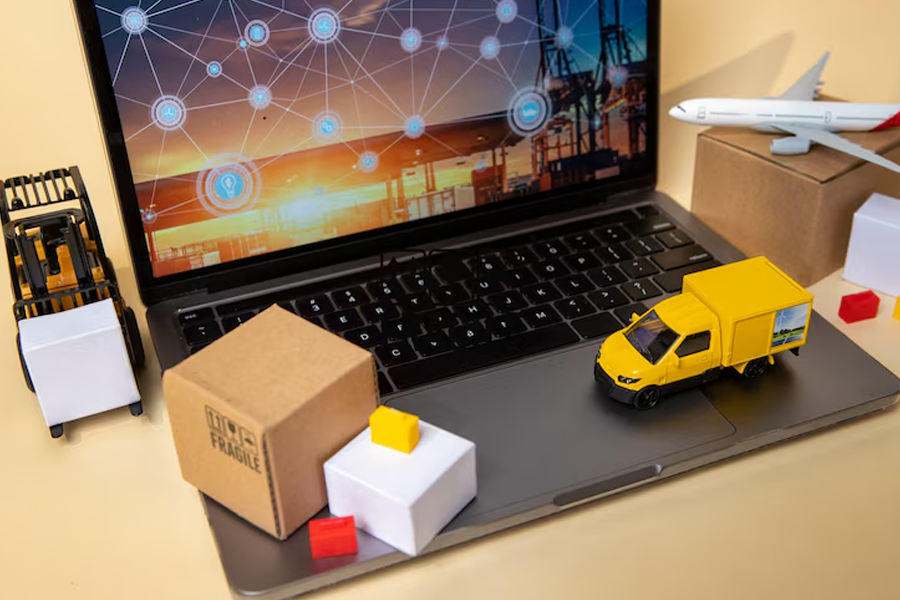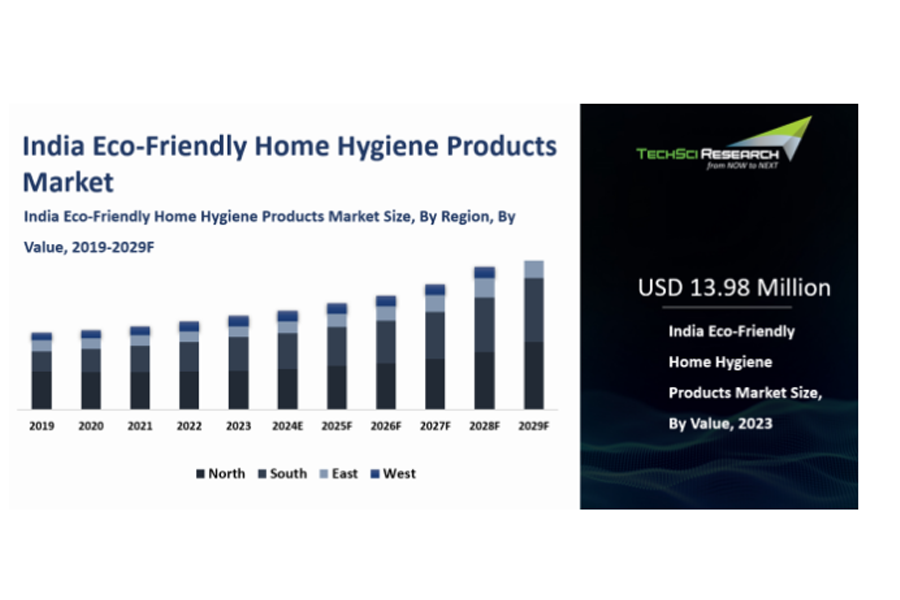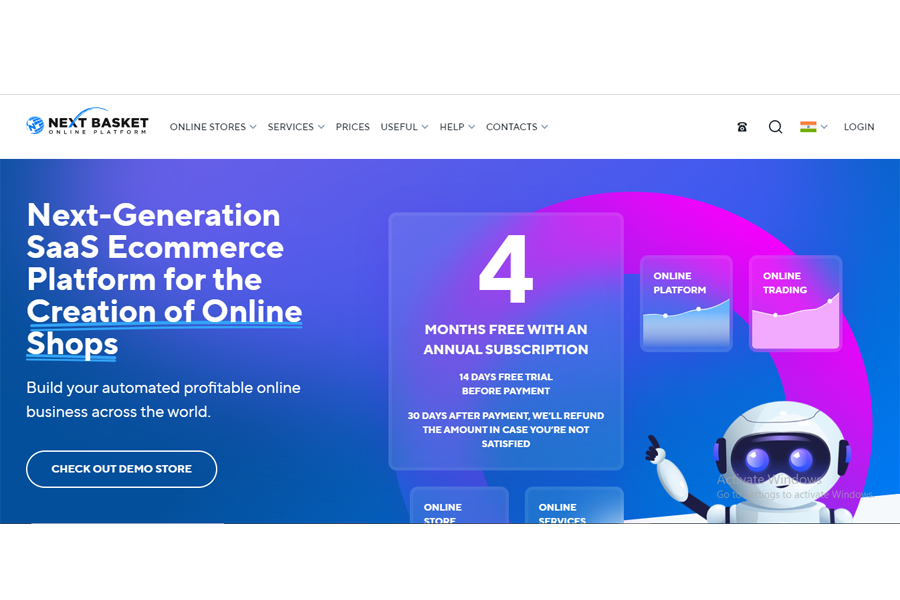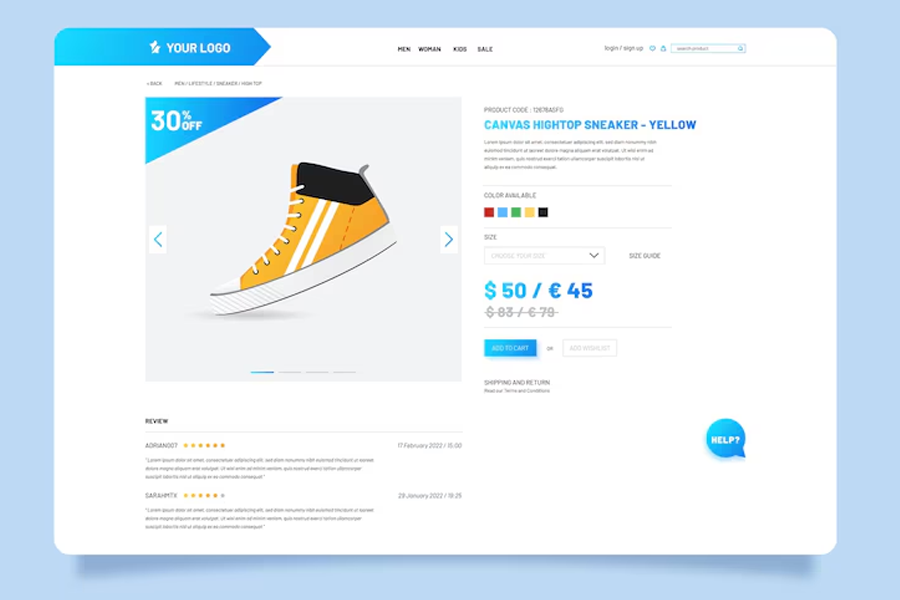Are you wondering how to start dropshipping business in India and unsure where to begin? You’re not alone. Many others have had similar worries and we’re here to provide guidance.
With the emergence of e-commerce dropshipping solutions like NEXT BASKET, you can enjoy a more seamless drop shipping experience.
Beyond swift store setup, you can integrate tools that streamline inventory management and order fulfillment. So worry less and use these tools to build your dream store.
Follow us as we distill what dropshipping is, how to do dropshipping in India, why consider it a source of income in 2024, and tips when building your store.

Dropshipping in India: The Basics
Dropshipping in India is an online business where e-commerce stores sell products online without worrying about inventory management.
It’s an ecommerce business model where you should focus on maintaining relationships with your suppliers or an Indian dropshipping company rather than procuring, storing, and shipping products.
Overview of the dropshipping model
Imagine a scenario where a customer purchases on your site, but the order is forwarded to a third party that handles the packaging and shipping of the product to your customer. The third party here is your supplier.
In dropshipping, you can sell the products under your supplier or manufacturer brand or as white label products (the same products produced by one company and sold by another under a different brand name).
To succeed with your dropshipping business, you should understand that your relationship with suppliers is crucial.
So, is dropshipping legal in India?
Yes, you can start dropshipping in India as an individual. Still, you must obtain the GST (Goods and Services Tax) number and register the business as a private limited company or sole proprietorship. Let’s see some pros and cons of an online dropshipping business.
Advantages and disadvantages of dropshipping
Dropshipping is a low-risk business model with a low entry cost. You should spend around ₹8,000- ₹10,000 when starting the business, excluding the advertising cost. This makes it an excellent idea for someone with a tight budget:
The following are some advantages of dropshipping:
- The profit margin from the dropshipping business model is relatively high as the average dropshipping income in India is between Rs 20,000 to Rs 5,00,000 every month, depending on the products you sell.
- You don’t need to worry about inventory management to sell and attract customers.
- You can sell a wide selection of products.
The following are some downsides of dropshipping:
- The dropshipping model has stiff competition as drop shippers will sell the same products as you.
- Low control over the supply chain because it’s your supplier that is responsible for maintaining inventory and raw materials, shipping, and delivery
- Low profit margins per product.
Starting dropshipping at no cost is possible, but you must invest money to grow the business. Lastly, remember your overall earnings depend on how much you can sell and the retail price.
Current state and potential of dropshipping in India
Although there are some downsides to dropshipping in India, it still looks promising.
Firstly, India’s growing popularity of online shopping and dropshipping websites contributes to its promising future.
The country is also home to one of the world’s leading online retail markets (Flipkart). There is potential for drop shipping because there is rapid internet access in India and an Indian population of over 1.44 billion.
Niche Selection and Market Research
Is dropshipping profitable in India? Yes, it is, and we will help you find profitable dropshipping niches in India.
You must carefully analyze products to sell online and find the right supplier to ensure that your customers only get high-quality products.
Thankfully, some Indian dropshipping companies like BaapStore and online retail markets can make your dreams come true. Let’s see some lucrative dropshipping business ideas below.
Health and Wellness Products
According to Statista, India’s Health & Wellness Coaching market should reach INR 1,916.00m by 2024 and is projected to keep growing — a 17.31% growth from 2024-2028. This is no surprise due to India’s population.
There is always someone looking for a health remedy. However, it will be tricky if you aren’t a medical practitioner. It would help if you looked into selling organic supplements, ayurvedic products, and fitness supplements that need less expertise.
Suppliers: You can find a reliable supplier on IndiaMART, TradeIndia, and Alibaba for this India profitable niche.
Eco-Friendly Products
According to TechSciRESEARCH, the India Eco-Friendly Home Hygiene Products Market was valued at USD 13.98 million in 2023 and is expected to grow in market value.
Aside from this, there are several eco-friendly product categories like sustainable fashion, eco-friendly personal care, and home care products, amongst others.
Suppliers: Greenhandle is a tremendous example of a local dropshipping supplier for eco-friendly packaging and wear. You might also find eco-friendly products in IndiaMART, TradeIndia, Alibaba, and AliExpress.

Source: Free report from TECHSCIREPORT
Tech Gadgets and Accessories
One thing is sure in India: tech products are highly used. Don’t believe us? Check YouTube to see how more Indians take tech and computer science-related courses. Many students can attest that an Indian contributed to helping them understand their books.
Aside from that, The National Association of Software and Service Companies (Nasscom) foresees the tech sector in India to grow by 3.8% to $253.9 billion in 2024. It would help if you considered selling the latest gadgets Like the iPhone 15, smart home devices, and smartphone accessories.
Suppliers: Find a reliable selling merchant on Alibaba and AliExpress, then open your ecommerce store.
Tips for Conducting Market Research
If the niche you want to sell in isn’t listed above, then you should be able to perform research on your own as a drop shipper.
The following are some tips to consider when finding the best products for dropshipping in India:
- Use Google Trends: Google Trends helps you understand consumers’ interest over time. Pay attention to the graph pattern if you want to know the most relevant dropshipping product. If there is a spike or consistent uptrend, you know it’s well received.
- Explore Social Media and Forums: Social media platforms like Twitter, Instagram, and Question and Answer (like Quora and Reddit) can be helpful for market research. You can find the demand for a product and online retailers in your niche and observe consumer behavior.
- Analyze Competitors: Find your dropshipping competitors and see how they perform. Some drop shippers are open about their business, so you should be able to find them online. Tools like Similarweb and SEMrush can help you understand their performance, social media marketing strategies, and traffic sources.
After finding a product niche, you should know your target audience to offer them the best experience and top-notch customer service. Before conducting market research, have a list of products to see the conversations around them.
Legal and Regulatory Considerations
Like any country, you must consider the legal side before launching a business online in India. Whether it’s just you or with a dropshipping partner, there are steps you need to consider.
Below, we have outlined some essential key legal aspects you need to know.
Registering Your Business and Obtaining Necessary Licenses
The first step in registering your business is to choose your business structure.
For example, if you are the only one running your business, the following are the steps to registering your business online:
- Choose between a Sole Proprietorship or a one-person business. Other examples are limited liability partnerships (LLPs) and private limited companies. You should know the pros and cons of each.
- You must obtain a trade license from your local municipality as a sole proprietorship. LLPs and private limited companies require registration with the Ministry of Corporate Affairs (MCA) and obtaining a Corporate Identification Number (CIN).
There are other licenses you should get depending on your product category. Regardless, the general requirements include a GST registration and an Import Export Code (IEC) if you’re importing goods.
Tax Regulations and GST (Goods and Services Tax)
Most goods and services in India are subject to GST — an indirect tax on product manufacturing, sale, and consumption. As a dropshipper, you must understand the GST implications for your products and services.
GST registration is mandatory if your turnover exceeds Rs. 40 lakhs for goods and Rs. 20 lakhs for services. These values may vary based on specific states.
When you register, you will get your Goods and Service Tax Identification Number (GSTIN). This ID is a unique 15-digit number assigned to each registered taxpayer. After getting your ID, you can also benefit from the input tax credit (GST credit).
Product Sourcing and Import Regulations
You will notice some suppliers and dropshipping websites in the niche list we curated above. Some are local suppliers in India, while the rest are international.
Several factors play a role when you decide between local and international suppliers, but you need to know the regulatory cost. You can expect things to be much easier with local suppliers regarding GST compliance and logistics, but they may offer a narrow product listing.
Meanwhile, international suppliers can offer more products, but you should expect stringent or more complex import duties and regulations. You also need to consider shipping costs and product prices. Would your customers be able to afford the extra expenses?
Consider the import-export business landscape in India before making the final decision.

How To Find Reliable Suppliers and Products
We cannot overemphasize the importance of finding reliable suppliers because they determine the quality of products you will provide, therefore, customer satisfaction. With the right supplier, you can save money because there will be few refund processes and minimal order wait time.
A reliable supplier will track resources, maintain inventory, white label shipping and update you accordingly to prevent order cancellations and lost sales.
Research Suppliers In India and Abroad
You can easily find any supplier by googling related search terms. But, finding the right supplier requires you to do extensive research and check the customer’s reviews.
Start your search using online directories like the following:
- Alibaba: Alibaba offers many products, including electronics, clothing, home goods, machinery, and more. It connects suppliers from China to other Asian countries.
- Flipkart Wholesale: Flipkart Wholesale is a B2B e-commerce platform by Flipkart that provides bulk products to retailers and small businesses. It offers fashion, electronics, home essentials, and grocery products.
- Meesho: Meesho is a social commerce platform where anyone can start a business by reselling products. It offers a variety of products, from clothing, accessories, and home decor to electronics.
- JioMart: JioMrat is an ecommerce platform that offers a variety of groceries, household essentials, personal care products, and more.
- IndiaMART: IndiaMART is India’s largest online B2B marketplace that offers products in manufacturing, agriculture, chemicals, and more.
Find suppliers whose e-commerce store has positive reviews, a history of reliability, and excellent customer service. You can attend events where suppliers are needed to find suppliers locally. This way, you can try the products firsthand and determine if the quality is what you need.

Evaluate Product Quality and Pricing
So you have found a supplier with great reviews who effectively communicates and is transparent. Now, you need to confirm the quality of the product. Consider requesting a sample test order to evaluate the international or Indian products.
Check the quality, packaging (if selling under your supplier brand), and shipping times. Additionally, after confirming the quality of the products, compare the pricing to competitors to ensure you are selling the products at a competitive market price for that quality.
Build Relationships with Suppliers and Negotiate Terms
It is essential to build relationships with your suppliers for long-term success. To an extent, you should have some personal information about them through their social handles, but there should be boundaries.
At the beginning of the relationship, there should be clear communication, and you should be able to air your concerns. You can also draw up a contract where necessary to negotiate the terms of working, such as the pricing for wholesale box, minimum order quantities, and payment terms.
Building an Ecommerce Website For Dropshipping
Dropshippers are among a long list of entrepreneurs who need e-commerce platforms to thrive.
When building yours, your focus should be on automating the entire process. Your supplier should get alerted once a customer buys, and you should have real-time updates on a product so customers know which is out of stock.
Choosing a suitable ecommerce platform
When choosing a suitable e-commerce platform for your dropshipping business, you need to consider some essential factors such as:
- Cost: You should consider your budget. How much are you willing to invest to start the ecommerce store? As a beginner, you may want one that’s efficient and minimal cost.
- Usability: How easy is it to navigate the platform? It should be easy to perform essential functions like setting up your store, adding products, and managing orders.
- Scalability: Your platform of choice should be able to add or remove resources based on your needs. Once you start to gain massive traffic, your e-commerce platforms should be able to scale.
- Dropshipping Support: Use e-commerce platforms that provide built-in features that support dropshipping, such as automated order fulfillment and payment. The platform should help alert a supplier once a customer makes a purchase and integrate a payment method that automatically deducts the cost of the product before transferring your balance.
Your chosen platform should allow for the integration of third-party tools, business extensions, payment gateways, and marketing tools.
An eCommerce platform like NEXT BASKET offers many more tools and is scalable to fit your needs. When you start gaining traffic, you need an ecommerce solution to handle it.
Besides that, NEXT BASKET offers affordable pricing plans tailored to drop shippers. It minimizes employee costs as you don’t need to spend extra training your staff to use it. Instead, the NEXT BASKET team can manage your store for you.

Designing an attractive and user-friendly website
Once you have selected an e-commerce platform that ticks all the boxes and more, you should focus on making your website attractive and user-friendly. Firstly, you need to study your audience, and we have shared some tips on that previously.
Then, you should make sure your e-shop has the following characteristics:
- Clean Layout: Make the layout of your site clean and organized by using white spaces and including what is necessary to reduce clutters. Show products and brief details into your category pages with a functionality that further extends the information into a dedicated product page.
- Mobile Responsiveness: Make sure your site works well on mobile screens. As much as it is easy to neglect mobile screens, you should remember that most site visitors are likely mobile users.
- High-Quality Imagery: Use quality and aesthetic images to showcase your products. Your customers will form a perception of you within a few seconds of visiting, so you must use quality pictures to showcase your professionalism and credibility.
Allow your site to breathe your brand assets and values. Make sure visitors can identify you just by seeing your website with the colors, fonts, and messaging across your website.
Optimize Product Listings and Provide Detailed Descriptions
As a dropshipper in India, you need to create product listings and descriptions for your online store even though you don’t have a physical inventory. Of course, your product listing will be similar to your supplier’s, but you can customize yours and align it better with your brand voice.
Below is a checklist to follow when creating compelling product descriptions that captivate your audience.
Product title: Your product name and its brief benefit should be here. For example: Apple Juice For Clear Skin.
The product description should highlight important features and benefits.
The product images should be of high quality.
Product Variants: showcase product variants, if any, with detail.
Pricing: This includes the actual price and discounts, if any.
Real-time stock availability information.
Shipping options, costs, and estimated delivery times.
Customer reviews and ratings for social proof.
Additional details like warranty information or care instructions.
Call-to-action like Buy Now.
By incorporating everything said in this section, you should have a website that is appealing, easy to use, and navigate for your different groups of visitors.

Marketing and Promotion Strategies for Dropshippers
In the digital marketing world, a marketer who isn’t promoting their products or services is synonymous with a man who wants the attention of a lady he has feelings for but is making signals in the dark. How would the lady know he has any interest in her if his actions are hidden?
As a dropshipper, you should not be like this man in our scenario. You have to let people know what you are doing. In the following sections, we have outlined.
Create Strong Brand Identity for Your Dropshipping Business
Building a solid brand for your dropshipping store cannot be done by mistake. You need to put in effort and consider branding elements. Firstly, you should outline what your brand is about and what you stand for.
This level has values, purpose, mission, and vision statement.
At the next level, you must consider visual branding elements like colors, logos, fonts, and imagery. Ensure these are always consistent.
Then, tell your story as Rivaah did in this YouTube video. They told a beautiful story on the importance of Jewley for Indian weddings.

Develop Effective Digital Marketing Campaigns
Campaigns are a great way to reach new audiences with new ideas and concepts, so consider them in your strategy. Although not by a drop shipping business, Slack’s word-of-mouth marketing is an example of a successful campaign highlighting praise for Slack.
They created “The Wall of Love” Twitter account (@SlackLoveTweets) to retweet users’ positive experiences with Slack. This has helped Slack grow to over 8 million active monthly users.
Use Social Media and Influencer Marketing
Over time, influencer marketing in India has experienced tremendous growth, and as a result, more brands have allocated their budgets for influencer marketing.
Outlook Business reported that the influencer marketing industry will be valued at Rs 3,375 Crore By 2026.
Therefore, social media and Influencer marketing are great ways to solidify your brand. Instead of just being the regular dropshipping brand, you can stand out. Once you confirm that your suppliers are reliable, you can partner with third-party brands to create advertisements that outsell your product.
Meanwhile, ensure you only use influencers in your niche to avoid resource wastage. You can also opt for paid advertising on any social media platform to get your brand in front of more eyeballs.
Customer Service and Retention
Whether or not you manage inventories is none of your customers’ business. They don’t care that you are a dropshipper, so ‘sorry, it is not my fault’ won’t cut it. You need to have measures to deal with such scenarios.
Below is how you can manage customer service and retention even without direct access to products.
Provide Excellent Customer Support and Communication
To maintain sustainable relationships with your customers, you must inform them of your communication channels like email, live chat, and social media. Ensure it is visible on your website so they don’t angrily leave when you don’t deliver on promise.
Some may report you on social media if they can’t reach you on any channel. Therefore, to avoid all these, clearly mention your communication channels. Additionally, you should have a response policy of a maximum of 24 hours.
Handle Returns, Refunds, and Order Issues Well
Your online store should have a policy for handling returns (return of product and replacement) or refunds (returning payments), depending on which works best for your business.
There are also cases where delivery delays may lead to customers canceling orders; you may need to create policies to address these unless you can guarantee that they will get their products within the set timeframe.
Meanwhile, ensure that your refund or return process is quite simple. You won’t have to worry much if you and your supplier have negotiated this in your agreement terms. Ensure your supplier has a policy for this, too, so you won’t be handling it because recurrent refunds and returns would lead to a loss.
Implement Loyalty Programs to Retain Customers
You can create a shopping dashboard or a reward system where each customer gets bonus points on every purchase, and a time will come when they can use their points or credits to purchase an item. This loyalty solution could encourage them to repeat purchases.
However, you should only do it when you are buoyant enough to afford it without running on a loss. Other means to enable them to keep buying are discounts, freebies, or exclusive offers.
How To Scale and Grow Your Dropshipping Business in India
Scaling and growing your dropshipping business is no easy feat, mainly because you don’t own the products, but it is not impossible. We have seen successful dropshippers like Kylie Jenner with her Kylie cosmetics and Notebook Therapy.
Below are some key strategies to grow your own dropshipping business.
Analyze Sales Data and Identify Opportunities
You must know your conversion rate, customer acquisition costs, and sales data. Also, you should look at the charts of your sales trend over time to get the picture. Compare the sales data of each product to identify best-selling and high-margin products.
If their profit margin is high, you should devise new ways to promote them. However, if other products have explosive sales potential and a high profit margin, you should direct your focus on them.
Lastly, pay attention to the segment of your audience that buys each product.
Expand Product Offerings and Diversify Suppliers
When expanding your business into new markets, you must conduct market research and identify trending products and emerging niches. You should also partner with multiple suppliers to diversify your product listings and reach more people.
Also, consider adding unique products that will set you apart from competitors. Use feedback from customers to know how well your new products are performing.
Optimize Operations and Invest in Automation
Expansion requires a team that will handle your operations and use automation. Invest in software solutions like inventory management software, customer relationship management (CRM) systems, and ecommerce platforms with inbuilt automation features.
Analyze sales data, expand product offerings, diversify suppliers, optimize operations, and invest in automation to scale and grow your dropshipping business while maintaining a competitive edge in the market.

How To Overcome Common Challenges
In India, being a dropshipper is not without its challenges, and most of these may not be your fault, so we emphasized getting a reliable supplier for your peace of mind.
The first problem you may experience is logistics. Having a reliable supplier that delivers on promise should not be a challenge.
Another issue may be with the payment gateway. Once the customer pays, the supplier’s fee will be deducted, and your balance will be sent to you.
There have to be multiple seamless payment methods that allow customers to pay, and there won’t be any issues with your and your customers’ payments. Include popular methods such as digital wallets, UPI, and cash on delivery (COD). Also make sure you can safely receive international payments if you’re planning to sell beyond India.
Frequently Asked Questions
How much does it cost to start a dropshipping business in India?
Ideally, it may cost nothing, but if you aim to start bigger, It should cost around ₹8,000- ₹10,000 to start dropshipping aside from advertising costs. This should cover ecommerce platform fees, domain name registration, your dropshipping website hosting, logo and branding, and initial product samples.
How much can you earn from dropshipping in India?
The average dropshipping income in India should be between Rs 20,000 and 5,00,000 monthly if you sell several products.
How does dropshipping work in India?
First, you need to find a supplier for an in-demand product and agree with them. Set up an e-commerce store so that once a customer